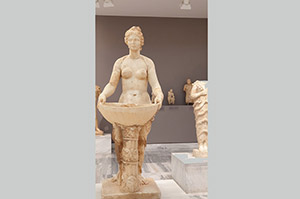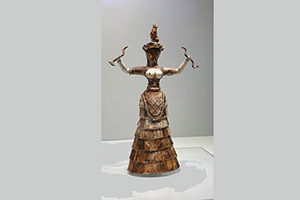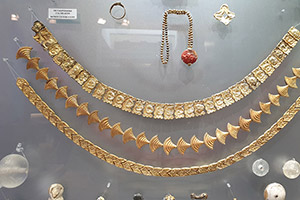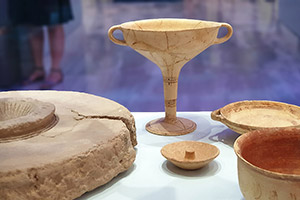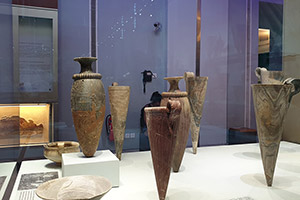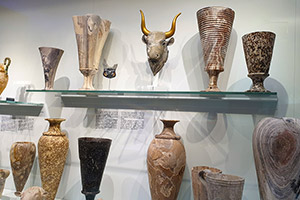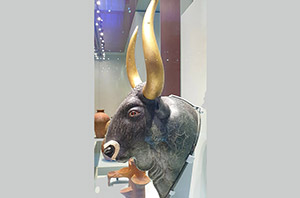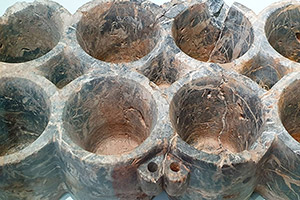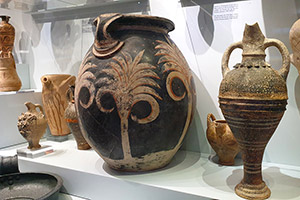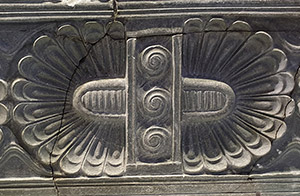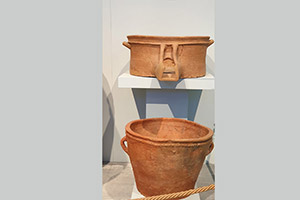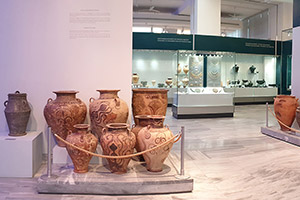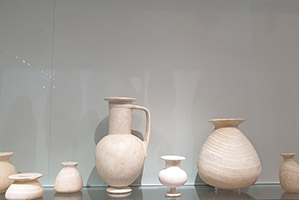Archaeological Museum Heraklion
The archaeological Museum of Heraklion is the most important museum in Greece and among the most important in Europe. There you will see the oldest witness of our European civilisation, with artefacts from all periods of Cretan prehistory and history. The museum covers a chronological span of over 5,500 years from the Neolithic period to Roman times. The museum, located in the town centre not far away from Heraklion harbour, was built between 1937 and 1940 by the architect Patroklos Karantinos on a site previously occupied by the Roman Catholic monastery of Saint Francis which was destroyed by an earthquake in 1856. It is a modern building and an important example of modern architecture. The architect Karantinos applied the principles of modern architecture to the specific needs of a museum by providing good lighting from the skylights. The two-storey building has large exhibition spaces, laboratories, a drawing room, a library, offices and a special department and the Scientific Collection Room, where several finds are stored and studied. The museum shop sells postcards, museum copies and books. There is also a café.
THE HIGHLIGHTS OF THE HERAKLION MUSEUM: THE SNAKE GODDESS: This statuette dates from the Neopalatial Period, is 29cm and depicts a snake goddess or a high priestess; her dress is typical of Minoan attire. BULL'S HEAD RYTHON The bull dates from the Neopalatial Period, is 30,5 cm high, is carved out of soapstone (steatite) and has gilded horns. His eyes are made of red Jasper and white marble around the nostril. The DISK OF PHAISTOS: This famous clay tablet which resembles hieroglyphic signs, was found at Phaistos (southern Crete) and it dates from the Protopalatial (??) Period; its Diameter is 10.5-10.8 cm.
BULL LEAPING FRESCO: This fresco dates from the late Neopalatial Period and is 62.3 cm high, depicting a running bull and three acrobats. Two women on the left hold the running bull by its horns, while a man balances on the bull's back. GOLD BEE PENDANT: The gold bee pendant found in Chrysolakos near Malia dates from the Protopalatial Period. This find is the famous Metalworking of the Heraklion Museum, dated to Protopalatal Period and it is 4.6 cm high. The gold cast depicts two bees arranged around a drop of honey.
More information for booking the best Hotels, Apartments and Villas in Heraklion-City: info@kreta.com



